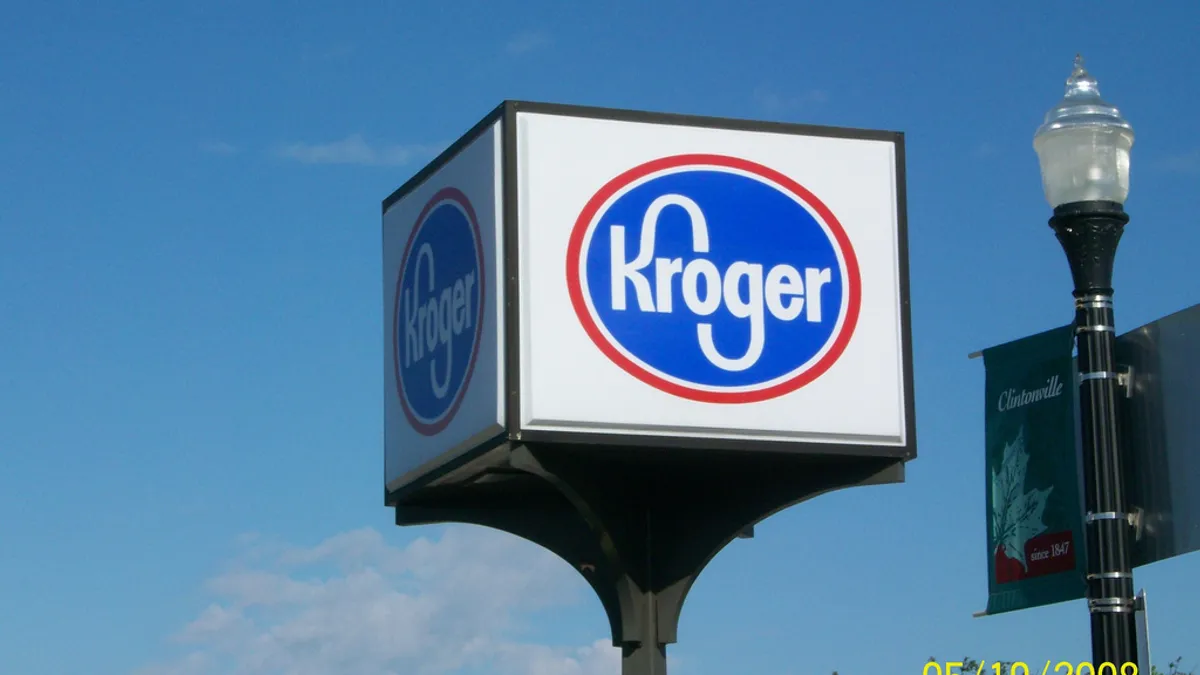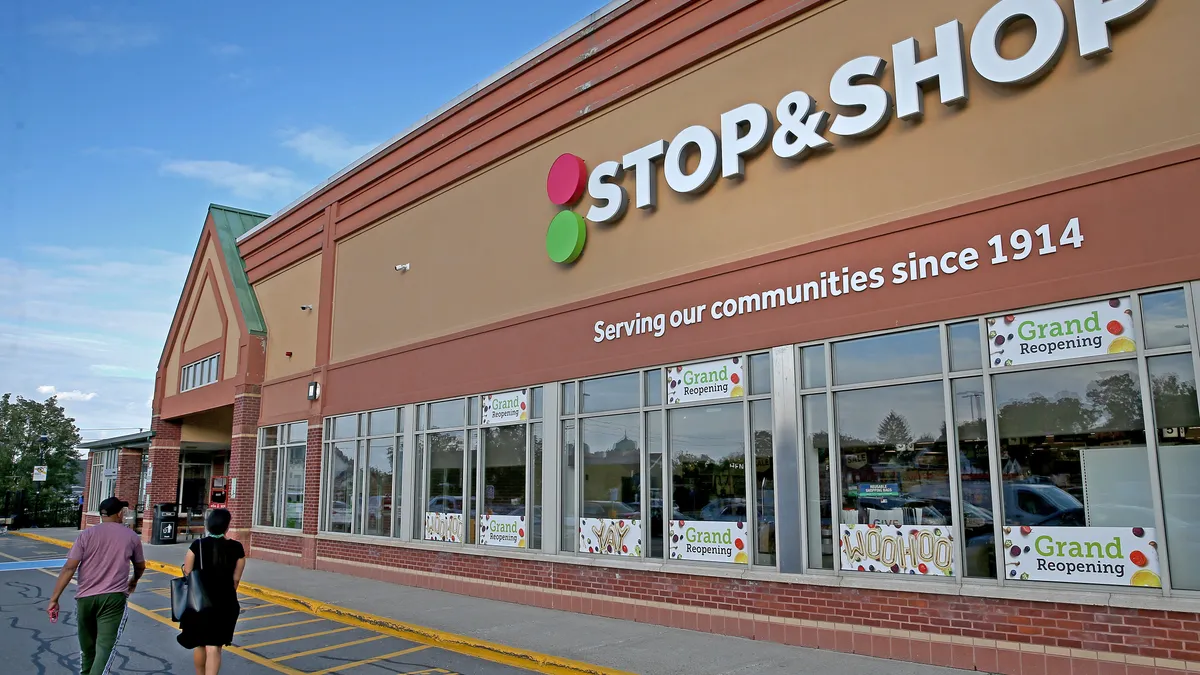Dive Brief:
- Falling prices and rising wages are squeezing grocery stocks right now, according to U.S. News & World Report. Walmart and Target have raised their minimum wages to $11 per hour, while Costco recently established a $13 per hour minimum. Target has said it plans to pay a minimum wage of $15 per hour by 2020.
- UBS analyst Michael Lasser singled out Kroger and Sprouts Farmers Market as retailers that will experience the most pressure from rising wages and falling prices. Sixty-one percent of Sprouts stores, he wrote in a September note, are in states that have wage increases planned over the next three years — nearly double the industry average of 31%. Costco, meanwhile, is well-positioned, according to Lasser, because it already pays above-average wages.
- Price cuts from Amazon and Target have also put pressure on grocery retailers, U.S. News & World Report noted.
Dive Insight:
The squeeze on grocery stocks right now is unavoidable for most affected companies. With unemployment hovering around 4%, and with retailers needing to acquire and retain good workers, rising wages are a necessity. At the same time, unprecedented industry competition means retailers have to keep prices low in order to retain market share.
Kroger, one of the most heavily impacted companies, has seen its stock plummet more than 30% this year. To improve efficiency and squeeze more sales out of its stores, the country’s largest traditional grocer introduced a new blueprint, Restock Kroger, this fall. That plan, which leverages Kroger’s data capabilities, its growing online footprint and store technology, seeks to produce $400 million in profit by 2020 and $4 billion in free cash flow over the next three years.
Sprouts Farmers Market, meanwhile, has seen ups and downs in its stock price but overall remains up around 16% on the year. The company reported stellar top-line growth in its most recent financial quarter, and is hoping to grow its margins by increasing its private label and prepared foods sales.
To escape the squeeze, retailers are stepping out from the traditional definition of a grocery store. This includes a growing emphasis on foodservice, in-store restaurants, strategic partnerships and licensing agreements. Although it isn’t a publicly traded company, Hy-Vee has quickly set the industry standard for diversified grocers, with recent investments in fitness centers, a burger chain and telepharmacies.
Kroger is following suit with its emphasis on deli and prepared foods, including its own line of meal kits that’s expanding to stores across the country. The company is also set to open its first restaurant, a comfort-food stop called Kitchen 1883, located in northern Kentucky.
“If you’re eating, we want to serve you, and unless it’s dinner at a white tablecloth restaurant, that’s a meal we should be able to provide to you,” CEO Rodney McMullen told attendees at Kroger’s annual investor conference this fall.
These changes will certainly improve sales for grocers, but they will struggle to overcome the downward pressure that falling prices and rising wages are exerting on the industry. It’s also going to be very hard to overcome competitors that have deeper experience in these additional channels. Fast-casual restaurants like Panera and Smashburger are competing for those same meal dollars, while pharmacy giants like Walgreens and CVS are developing their own telehealth services, clinics and other offerings.
And then there’s the existential threat of Amazon. The company’s price cuts at Whole Foods stores have generated significant press and stand to steal away foot traffic around the holiday season. As the e-tailer evolves its online grocery platform, it stands to cause significant disruption across the industry.
All of this squeezing is great for supermarket customers and employees, but it's proving a tough road for retailers and their shareholders.









